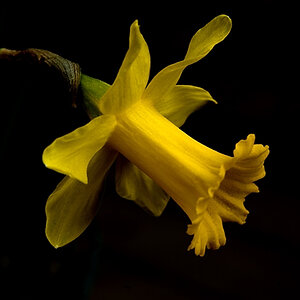Navigation
Install the app
How to install the app on iOS
Follow along with the video below to see how to install our site as a web app on your home screen.

Note: This feature currently requires accessing the site using the built-in Safari browser.
More options
You are using an out of date browser. It may not display this or other websites correctly.
You should upgrade or use an alternative browser.
You should upgrade or use an alternative browser.
Low Light Event photos
- Thread starter Hcham22
- Start date
-
- Tags
- candid shoot low light
tecboy
No longer a newbie, moving up!
- Joined
- Feb 17, 2012
- Messages
- 2,977
- Reaction score
- 358
- Can others edit my Photos
- Photos OK to edit
Why no flash?
Gary A.
Been spending a lot of time on here!
- Joined
- Sep 17, 2014
- Messages
- 22,357
- Reaction score
- 7,540
- Location
- Southern California
- Website
- www.garyayala.com
There are three main causes of blur:
1. Not properly focused;
2. Hand/Camera shake, your shutter speed is too slow to stop the camera from moving; and
3. Subject Motion, your subjects are moving too fast for the shutter to stop the motion.
For starter, shoot using the 'Rule of Thumb' for your shutter speed. The shutter speed should not be lower than the reciprocal of the focal length. So if you're shooting with a 50mm lens, then your shutter speed should not be less than 1/50 of a second. If you're shooting a 200mm lens, then 1/200th, et cetera.
The Rule of Thumb will take care of blur caused camera-shake.
The next thing to consider is the motion of the subjects. If the subjects are sedentary, then you're okay with a shutter speed based upon the Rule of Thumb. If your subjects are moving, then you gotta up the shutter speed to compensate for the motion. The quicker/faster the motion, the higher the shutter speed. Walking type speed you can get by within a range of 1/60 to 1/125+. For something faster like dancing then 1/125 to 1/250+.
The 1/60 for walking and 1/125 dancing are really on the low end and requires panning with the subjects and waiting for the peak of action to minimize blur. For a new person to photography, it is always better to overcompensate with a higher shutter speed and as your photography progresses, you'll pick up low light shooting techniques.
Start with the Rule of Thumb as a baseline, then adjust upwards to accommodate subject speed. You attain a proper exposure by opening up the lens aperture, or with adjusting the ISO upwards to 800, 1600, 3200 et al ... or you do both, open up the lens and adjust the ISO.
All these setting interact with each other and the image, I've tried to keep it simple. (Remember that the higher the ISO goes the greater the degradation (noise) of the image. The larger the aperture of the lens, the less depth of field ... and so on.)
1. Not properly focused;
2. Hand/Camera shake, your shutter speed is too slow to stop the camera from moving; and
3. Subject Motion, your subjects are moving too fast for the shutter to stop the motion.
For starter, shoot using the 'Rule of Thumb' for your shutter speed. The shutter speed should not be lower than the reciprocal of the focal length. So if you're shooting with a 50mm lens, then your shutter speed should not be less than 1/50 of a second. If you're shooting a 200mm lens, then 1/200th, et cetera.
The Rule of Thumb will take care of blur caused camera-shake.
The next thing to consider is the motion of the subjects. If the subjects are sedentary, then you're okay with a shutter speed based upon the Rule of Thumb. If your subjects are moving, then you gotta up the shutter speed to compensate for the motion. The quicker/faster the motion, the higher the shutter speed. Walking type speed you can get by within a range of 1/60 to 1/125+. For something faster like dancing then 1/125 to 1/250+.
The 1/60 for walking and 1/125 dancing are really on the low end and requires panning with the subjects and waiting for the peak of action to minimize blur. For a new person to photography, it is always better to overcompensate with a higher shutter speed and as your photography progresses, you'll pick up low light shooting techniques.
Start with the Rule of Thumb as a baseline, then adjust upwards to accommodate subject speed. You attain a proper exposure by opening up the lens aperture, or with adjusting the ISO upwards to 800, 1600, 3200 et al ... or you do both, open up the lens and adjust the ISO.
All these setting interact with each other and the image, I've tried to keep it simple. (Remember that the higher the ISO goes the greater the degradation (noise) of the image. The larger the aperture of the lens, the less depth of field ... and so on.)
DGMPhotography
Been spending a lot of time on here!
- Joined
- Mar 23, 2012
- Messages
- 3,160
- Reaction score
- 718
- Can others edit my Photos
- Photos OK to edit
You need to determine what the most important aspect of the photos are, for you. Is it stopping motion? Is it depth of field? Etc. Once you determine that, you set that setting to where it needs to be, and then compensate with the other two (the exposure triangle). This is where a full frame camera comes in handy, as they are typically able to reach much higher ISOs without noise/grain.
Also, did the event planners tell you you can't use a flash, or is that a limitation you set for yourself? You can get "candid" shots using a flash.
Also, did the event planners tell you you can't use a flash, or is that a limitation you set for yourself? You can get "candid" shots using a flash.
Hcham22
TPF Noob!
- Joined
- Oct 8, 2017
- Messages
- 3
- Reaction score
- 1
- Can others edit my Photos
- Photos NOT OK to edit
Thanks for the advise, the event planner prefers no flash and have been told theres natural light but wanted to make sure my images aren't blurry. My camera is 5 years old but is a full frame camera and has been fine and is perfect in outdoor situations but lately indoor with no flash and low light seems to reduce the quality of the image.You need to determine what the most important aspect of the photos are, for you. Is it stopping motion? Is it depth of field? Etc. Once you determine that, you set that setting to where it needs to be, and then compensate with the other two (the exposure triangle). This is where a full frame camera comes in handy, as they are typically able to reach much higher ISOs without noise/grain.
Also, did the event planners tell you you can't use a flash, or is that a limitation you set for yourself? You can get "candid" shots using a flash.
Hcham22
TPF Noob!
- Joined
- Oct 8, 2017
- Messages
- 3
- Reaction score
- 1
- Can others edit my Photos
- Photos NOT OK to edit
Thanks you for the tips. I'll try these out. the event will be people standing and chatting for the most part i just want to make sure i get the best quality imagesThere are three main causes of blur:
1. Not properly focused;
2. Hand/Camera shake, your shutter speed is too slow to stop the camera from moving; and
3. Subject Motion, your subjects are moving too fast for the shutter to stop the motion.
For starter, shoot using the 'Rule of Thumb' for your shutter speed. The shutter speed should not be lower than the reciprocal of the focal length. So if you're shooting with a 50mm lens, then your shutter speed should not be less than 1/50 of a second. If you're shooting a 200mm lens, then 1/200th, et cetera.
The Rule of Thumb will take care of blur caused camera-shake.
The next thing to consider is the motion of the subjects. If the subjects are sedentary, then you're okay with a shutter speed based upon the Rule of Thumb. If your subjects are moving, then you gotta up the shutter speed to compensate for the motion. The quicker/faster the motion, the higher the shutter speed. Walking type speed you can get by within a range of 1/60 to 1/125+. For something faster like dancing then 1/125 to 1/250+.
The 1/60 for walking and 1/125 dancing are really on the low end and requires panning with the subjects and waiting for the peak of action to minimize blur. For a new person to photography, it is always better to overcompensate with a higher shutter speed and as your photography progresses, you'll pick up low light shooting techniques.
Start with the Rule of Thumb as a baseline, then adjust upwards to accommodate subject speed. You attain a proper exposure by opening up the lens aperture, or with adjusting the ISO upwards to 800, 1600, 3200 et al ... or you do both, open up the lens and adjust the ISO.
All these setting interact with each other and the image, I've tried to keep it simple. (Remember that the higher the ISO goes the greater the degradation (noise) of the image. The larger the aperture of the lens, the less depth of field ... and so on.)
dennybeall
No longer a newbie, moving up!
- Joined
- May 13, 2014
- Messages
- 2,308
- Reaction score
- 441
- Location
- OTOW - Ocala, Florida
- Website
- www.citrusphotorestore.com
- Can others edit my Photos
- Photos OK to edit
Remember - ISO IS YOUR FRIEND.
vintagesnaps
Been spending a lot of time on here!
- Joined
- Jan 13, 2013
- Messages
- 9,119
- Reaction score
- 3,109
- Location
- US
- Can others edit my Photos
- Photos NOT OK to edit
I've done events without using a flash. Go early, figure out where the light seems the best. I usually avoid darker corners of the room.
Notice where in the room the lights are and where there is more light hitting areas where subjects will be standing. You could take some test shots of table decorations, etc. Sometimes facing a different direction can give you better light. Figure out some good vantage points.
Sounds like you'll probably need a faster shutter speed than what you've been using. In lower light you may not get the same quality images as you would shooting outdoors in more light (because a camera records light). Figure out what settings for your camera will give you pictures without blur and without too much noise.
It takes learning and practice. Maybe go to an event that allows attendees to bring cameras and take pictures and get in some practice. The more you practice the better you should get at holding the camera steady so in lower light you can avoid movement blur.
Notice where in the room the lights are and where there is more light hitting areas where subjects will be standing. You could take some test shots of table decorations, etc. Sometimes facing a different direction can give you better light. Figure out some good vantage points.
Sounds like you'll probably need a faster shutter speed than what you've been using. In lower light you may not get the same quality images as you would shooting outdoors in more light (because a camera records light). Figure out what settings for your camera will give you pictures without blur and without too much noise.
It takes learning and practice. Maybe go to an event that allows attendees to bring cameras and take pictures and get in some practice. The more you practice the better you should get at holding the camera steady so in lower light you can avoid movement blur.
- Joined
- Jun 7, 2012
- Messages
- 15,469
- Reaction score
- 7,848
- Location
- Central Florida
- Website
- www.flickr.com
- Can others edit my Photos
- Photos NOT OK to edit
largest sensor possible.
ISO as high as you can reasonably go and still get acceptable results.
slowest shutter speed you can handhold and still stop whatever movement the subject has.
widest aperture possible while still getting the DOF you need/want.
ISO as high as you can reasonably go and still get acceptable results.
slowest shutter speed you can handhold and still stop whatever movement the subject has.
widest aperture possible while still getting the DOF you need/want.
Derrel
Mr. Rain Cloud
- Joined
- Jul 23, 2009
- Messages
- 48,225
- Reaction score
- 18,941
- Location
- USA
- Website
- www.pbase.com
- Can others edit my Photos
- Photos OK to edit
You have been given some good advice above. One thing to remember: at wider apertures, like f/1.8 or f/2 or f/2.8, that although there is not a "lot" of depth of field, at longer camera-to-subject distances, depth of field is less of an issue than when the camera is very close to the subject. In some situations,where people are 15 to 25 feet from the camera, there will be adequate depth of field to render a "scene" reasonably well, even at wider aperture settings.
Shoot the even as you see fit, but keep in mind that by photographing from somewhat of a distance, that many scenes can be rendered in a satisfactory manner even at wide f/stops.
Indoors in most sizes of rooms, depth of field is fairly dependendent upon camera-to-subject distance, more so than the aperture or focal length used. Moving farther back can increase the DOF to a pretty good degree in most rooms, especially with shorter lenses like 20,24,35,50mm.
Shoot the even as you see fit, but keep in mind that by photographing from somewhat of a distance, that many scenes can be rendered in a satisfactory manner even at wide f/stops.
Indoors in most sizes of rooms, depth of field is fairly dependendent upon camera-to-subject distance, more so than the aperture or focal length used. Moving farther back can increase the DOF to a pretty good degree in most rooms, especially with shorter lenses like 20,24,35,50mm.
dennybeall
No longer a newbie, moving up!
- Joined
- May 13, 2014
- Messages
- 2,308
- Reaction score
- 441
- Location
- OTOW - Ocala, Florida
- Website
- www.citrusphotorestore.com
- Can others edit my Photos
- Photos OK to edit
Another trick::
Practice holding the camera as high as you can up in the air. In crowds you can get some distance between you and the subject and also get some shots that include more people.
Practice holding the camera as high as you can up in the air. In crowds you can get some distance between you and the subject and also get some shots that include more people.
TCampbell
Been spending a lot of time on here!
- Joined
- Mar 31, 2012
- Messages
- 3,614
- Reaction score
- 1,556
- Location
- Dearborn, MI
- Can others edit my Photos
- Photos OK to edit
My normal advice is... use a flash (but know how to use the flash).
Can you provide more details about the event and why the event planner says not using a flash would be “preferred” (but it doesn’t sound like it’s required)?
Is this a sports game?
Is this a concert?
Is this theater?
Is this a private party?
Realistically what sort of lighting do you expect to encounter at this event?
I’ve done concerts in poor lighting and with no flash... but I was using a 135mm f/2 lens or a 70-200mm f/2.8 lens with image stabilization.
But if someone said “I want the best images... whatever it takes”... they’re getting flash photos. Those WILL be the best (the lighting you can control is always best).
If I can, then I’ll use flash in aperture priority mode. You didn’t mention what camera you have. My camera lets me set the shutter speed range when using aperture priority WITH a flash (mine is set to not allow shutter speeds slower than 1/60th) and this lets me nicely illuminate the subject in the foreground... but allow enough time for the ambient light to illuminate the background. It creates a nice balance and the overall mood of the event comes through. Without doing that, flash could result in a bright foreground with a background that fades to black and the images aren’t very attractive.
Can you provide more details about the event and why the event planner says not using a flash would be “preferred” (but it doesn’t sound like it’s required)?
Is this a sports game?
Is this a concert?
Is this theater?
Is this a private party?
Realistically what sort of lighting do you expect to encounter at this event?
I’ve done concerts in poor lighting and with no flash... but I was using a 135mm f/2 lens or a 70-200mm f/2.8 lens with image stabilization.
But if someone said “I want the best images... whatever it takes”... they’re getting flash photos. Those WILL be the best (the lighting you can control is always best).
If I can, then I’ll use flash in aperture priority mode. You didn’t mention what camera you have. My camera lets me set the shutter speed range when using aperture priority WITH a flash (mine is set to not allow shutter speeds slower than 1/60th) and this lets me nicely illuminate the subject in the foreground... but allow enough time for the ambient light to illuminate the background. It creates a nice balance and the overall mood of the event comes through. Without doing that, flash could result in a bright foreground with a background that fades to black and the images aren’t very attractive.
ac12
Been spending a lot of time on here!
- Joined
- Dec 5, 2017
- Messages
- 2,637
- Reaction score
- 911
- Location
- SF Bay Area, California, USA
- Can others edit my Photos
- Photos NOT OK to edit
Where you cannot use a flash, FAST glass.
This allows you to shoot at a lower ISO level, and have better image quality than raising the ISO.
Example.
1/60 sec, f/2.8, ISO 1600
1/60 sec, f/5.6, ISO 6400
The 2nd has a 2 stop penalty.
You can also raise the shutter speed to stop camera/subject motion better.
1/125 sec, f/2, ISO 1600
When I shoot basket ball with my 18-140, I am shooting at 1/500 sec, f/5.6, ISO=12800.
A FAST lens lets me shoot at 1/500 sec, f/2.8, ISO = 3200 or even 1/500 sec, f/2, ISO=1600, for better image quality.
This allows you to shoot at a lower ISO level, and have better image quality than raising the ISO.
Example.
1/60 sec, f/2.8, ISO 1600
1/60 sec, f/5.6, ISO 6400
The 2nd has a 2 stop penalty.
You can also raise the shutter speed to stop camera/subject motion better.
1/125 sec, f/2, ISO 1600
When I shoot basket ball with my 18-140, I am shooting at 1/500 sec, f/5.6, ISO=12800.
A FAST lens lets me shoot at 1/500 sec, f/2.8, ISO = 3200 or even 1/500 sec, f/2, ISO=1600, for better image quality.
Most reactions
-
 457
457 -
 288
288 -
 270
270 -
 268
268 -
 211
211 -
 189
189 -
 179
179 -
 178
178 -
 176
176 -
 173
173 -
 162
162 -
 126
126 -
 117
117 -
I
108
-
 94
94
Similar threads
- Replies
- 8
- Views
- 188
- Replies
- 1
- Views
- 297
- Replies
- 7
- Views
- 223

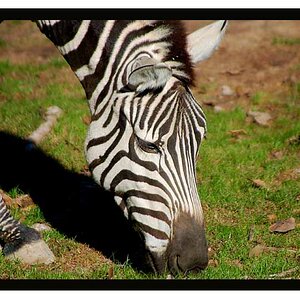
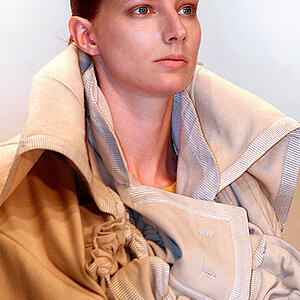
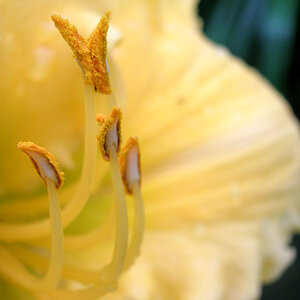
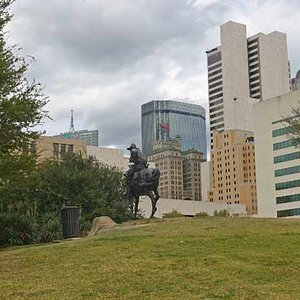
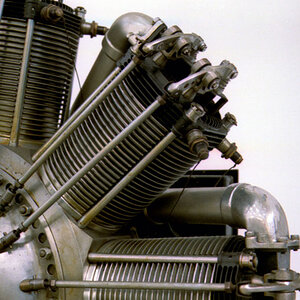

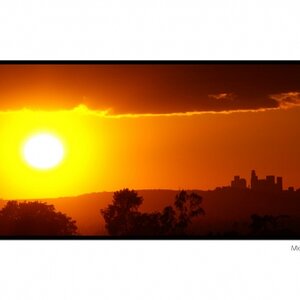
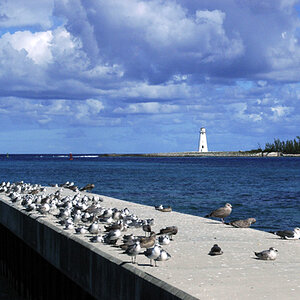
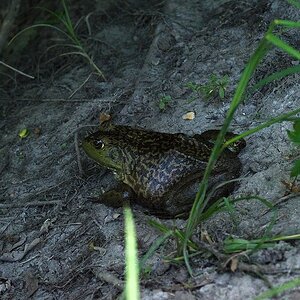
![[No title]](/data/xfmg/thumbnail/40/40288-4d5d7a8aa74ddfceb5fb82062d9b21be.jpg?1619739409)
![[No title]](/data/xfmg/thumbnail/32/32838-c28b0c47ca2cb319a1f97cc29ed60d61.jpg?1619735681)
